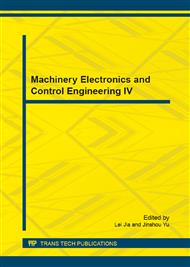p.324
p.329
p.333
p.341
p.345
p.350
p.355
p.360
p.364
Consensus Problem of Multivehicle Formation Using Nearest Neighbor Rule with Addition of State Buffer
Abstract:
We consider the problem of cooperation among a collection of vehicles performing a shared task using intervehicle communication to coordinate their actions. Tools from algebraic graph theory prove useful in modeling the communication network and relating its topology to formation stability. We show that agents can reach consensus if the value of the function is time invariant and we prove our result by taking agents initial state values. The concept of state buffer is also introduced to avoid delays in achieving consensus.
Info:
Periodical:
Pages:
360-363
Citation:
Online since:
December 2014
Authors:
Keywords:
Price:
Сopyright:
© 2015 Trans Tech Publications Ltd. All Rights Reserved
Share:
Citation:


